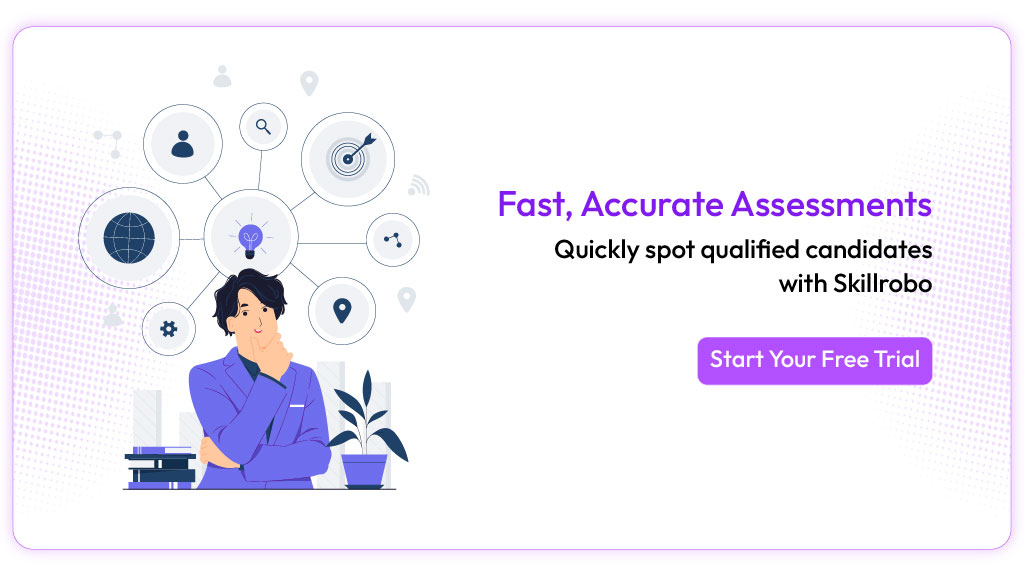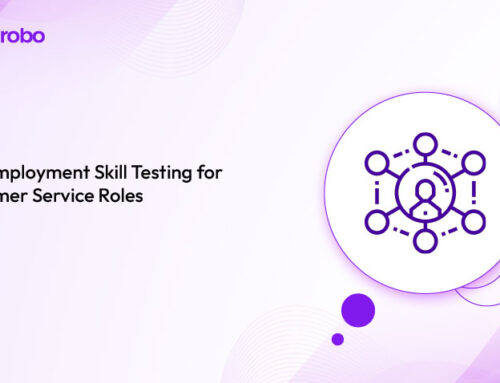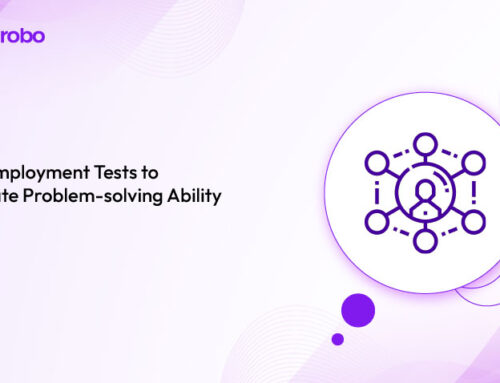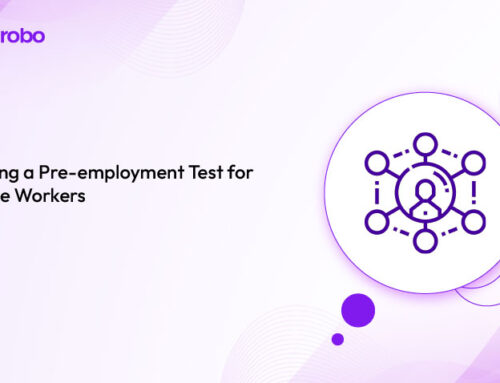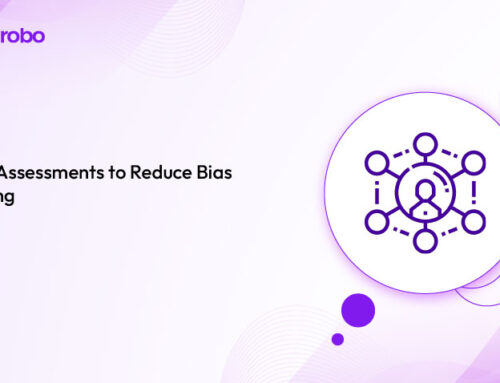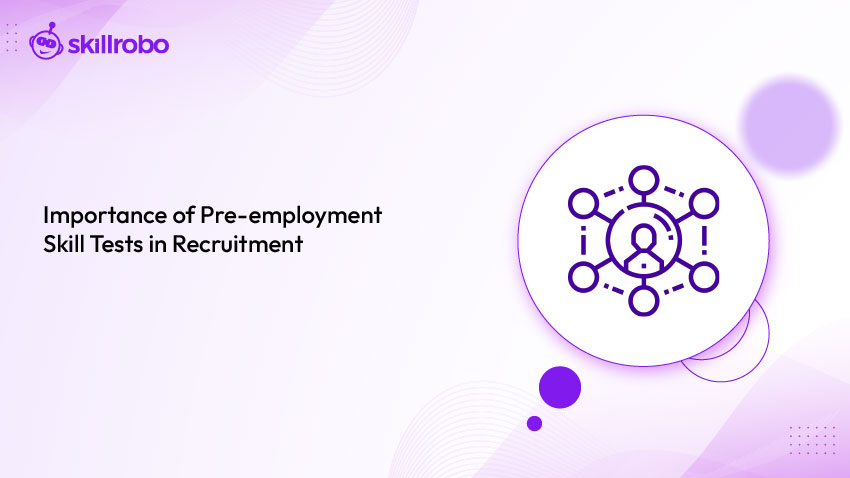
Key Takeaways
- Pre-employment skill tests offer an objective way to assess candidates’ real-world abilities, reducing reliance on resumes and gut instinct.
- These tests improve hiring accuracy, reduce bias, and help uncover capable candidates who may be overlooked in traditional screening.
- Role-specific assessments—like communication tests, job simulations, or problem-solving tasks—mirror on-the-job performance for better hiring decisions.
- Skill-based hiring enhances candidate experience, shortens the recruitment cycle, and leads to stronger team productivity and retention.
Hiring isn’t what it used to be. Scanning resumes, holding a few interviews, and going with your gut just doesn’t cut it anymore, especially when one bad hire can derail projects, team morale, and productivity. That’s where pre-employment skill tests come in.
These assessments give you a clear, unbiased view of what candidates can do, not just what they say they can do. Whether you’re hiring a tech whiz, a sales closer, or a finance pro, skill tests bring objectivity and speed into your hiring process.
They allow hiring teams to focus on data-driven decisions instead of assumptions. More importantly, they help surface candidates who may have been overlooked in traditional resume screens but are truly capable of delivering results.
What is Pre-Employment Testing?
Think of pre-employment testing as a backstage pass to a candidate’s abilities—before they step into your workplace. It’s a structured way to assess specific skills, behaviors, and competencies relevant to the job you’re hiring for.
Rather than relying solely on qualifications or interview charisma, these tests show how someone performs when faced with real work tasks. Want to know how someone solves problems, writes emails, or manages numbers? A skill test will show you—all without bias or assumptions.
And the best part? It levels the playing field. Every candidate gets the same test, the same opportunity, and the same fair shot.
This not only boosts fairness but also helps uncover hidden talent—those who may not have the perfect resume but have the potential to excel in the role. By putting skill front and center, you’re not just hiring faster—you’re hiring smarter.
Types of Pre-Employment Testing
There’s no one-size-fits-all when it comes to assessments. Each role demands a unique mix of technical, behavioral, and cognitive abilities—and that’s where pre-employment testing shines. By combining different test types, you can evaluate candidates more holistically and make informed, confident hiring decisions.
Here are the most common types of assessments you can use:
1. Cognitive Ability Tests
These measures require logical thinking, attention to detail, and problem-solving. Ideal for roles that require quick decision-making and analytical thinking. They help you identify candidates who can learn quickly, adapt to change, and solve challenges independently. A strong cognitive score often correlates with long-term job success.
2. Job-Specific Skill Tests
Want to know if someone can code, write, design, or analyze data? These tests simulate real tasks and let the candidate prove their skills. They eliminate guesswork by showing exactly how candidates perform in a practical context, not just how they talk about their skills in an interview.
3. Personality Assessments
These give you a glimpse into a candidate’s work style, team fit, and communication approach. Very helpful for customer-facing or collaborative roles. Understanding personality traits helps predict how someone will behave under pressure, resolve conflicts, and contribute to team culture.
4. Situational Judgment Tests (SJTs)
SJTs present real-world scenarios and ask candidates how they’d respond. It’s a smart way to assess judgment, ethics, and interpersonal skills. They offer insight into how a person might react to challenges, make decisions, or prioritize under realistic job conditions.
5. Communication and Language Skills
Clear, professional communication is non-negotiable. These tests evaluate grammar, tone, comprehension, and verbal reasoning. They’re particularly useful for support, sales, and client-facing roles where tone and clarity impact customer experience.
6. Work Sample Simulations
Whether it’s drafting an email or solving a case study, simulations mimic actual job tasks to evaluate practical performance. These tests are as close as you can get to “try before you hire,” giving a real sense of how a candidate will handle everyday responsibilities.
Benefits of Pre-Employment Skill Testing
Pre-employment skill tests aren’t just a nice-to-have, they’re becoming essential for modern, data-driven hiring. These tests take the guesswork out of recruitment and allow you to focus on what matters: capability, consistency, and cultural fit.
Here’s why more recruiters and hiring managers are putting skill testing at the heart of their hiring process:
1. You Hire Based on Facts, Not Gut Feelings
Skill tests give you real data, so hiring decisions are grounded in performance, not just impressions. You’re not relying on polished resumes or interview charisma—you’re evaluating how a candidate performs when it counts. This leads to smarter, more accurate hiring choices.
2. Saves Everyone Time
Instead of interviewing 20 people, narrow it down to the top 5 who have already proved they’ve got what it takes. This lets recruiters focus their time and energy on high-potential candidates, streamlining the entire hiring funnel from start to finish.
3. Reduces Hiring Bias
Everyone takes the same test. That means no unconscious bias, no favoritism—just skills doing the talking. Standardized assessments bring fairness and transparency to the process, helping you build more inclusive teams.
4. Boosts Candidate Confidence
High-performing candidates love the chance to showcase what they can do. It gives them a fair shot, especially if their resume isn’t flashy. When candidates know they’re being judged on skills, not pedigree, they feel more empowered and engaged.
5. Improves Team Productivity
When you hire the right fit from the start, teams work better together, and you avoid the cost of training or rehiring later on. Hiring based on capability leads to better collaboration, quicker onboarding, and stronger overall team dynamics.
6. Makes Scaling Easier
Got 100 roles to fill? Skill tests help you screen at scale without losing precision. They automate the first layer of filtering, ensuring you never compromise on quality, no matter how fast you’re growing.
7. Enhances Employer Brand
Using modern, skill-based hiring tools shows that you’re serious about finding the best, not just the loudest. That matters to top talent. Candidates appreciate a process that values what they can do rather than just what they say they’ve done—and that sets you apart.
Examples of How Pre-Employment Tests Are Used
Pre-employment skill tests are most effective when they mirror the actual responsibilities of a role. These assessments help hiring teams evaluate job readiness before a candidate even steps into the workplace.
1. Digital Marketing Roles
Candidates can be given a task to review a mock campaign and suggest ways to improve engagement, click-through rates, or conversions. This assesses their ability to interpret data, think creatively, and align strategies with business goals.
2. Sales Positions
A common approach is to present a mock sales scenario, such as handling a pricing objection or responding to a difficult client, and asking the candidate to write or record their response. This evaluates their persuasion skills, product understanding, and emotional intelligence under pressure.
3. Customer Support Roles
Here, the test might simulate a support ticket where candidates must write a clear, empathetic response. Grammar, tone, and professionalism are key. This shows how well they can de-escalate issues and maintain customer satisfaction in real-world situations.
4. Entry-Level and Administrative Jobs
For these roles, simple tests on typing speed, data accuracy, basic math, or reading comprehension can go a long way. These help filter candidates who are dependable, detail-oriented, and able to handle repetitive or high-volume tasks efficiently.
5. Technical or Analytical Positions
Candidates applying for roles in finance, data analysis, or IT can be given problem-solving or logic-based assessments. Tasks might include interpreting datasets, debugging simple code, or finding errors in spreadsheets. These tests ensure you’re hiring someone with both accuracy and technical know-how.
6. Creative Roles
For content creators, designers, or copywriters, you can assign a short project, like writing a blog intro, designing a social media post, or critiquing a visual. This allows candidates to demonstrate originality, attention to detail, and brand alignment.
Pre-employment tests like these aren’t designed to trip candidates up—they’re built to reveal potential. And when a candidate excels in tasks that closely resemble your actual job requirements, you can move forward with confidence.
Challenges to Watch Out For
Pre-employment testing is powerful, but like any hiring tool, it works best when used thoughtfully. Here are a few things to be mindful of:
1. One-Size Doesn’t Fit All
Generic tests won’t help you hire the best fit. Always tailor your assessments to the role. A role in finance requires very different skills from one in customer service. Customization ensures relevance and a better candidate experience. When tests reflect real job scenarios, the results become more predictive and meaningful.
2. Keep It Fair and Accessible
Make sure tests are mobile-friendly, inclusive, and reasonable in length. A long, confusing test will turn great candidates away. Design with accessibility in mind—consider different devices, internet speeds, and even neurodiversity. A streamlined test boosts participation and reflects positively on your brand.
3. Don’t Rely on Scores Alone
A test score is just one part of the picture. Pair it with interviews, reference checks, and cultural fit assessments. Soft skills, team alignment, and long-term potential often surface in conversations, not just assessments. Use test results to guide, not dictate, your final decision.
4. Respect Candidate Time
The best candidates are busy. If your test is too long or too vague, they may drop off before finishing. Aim for quality over quantity—test what truly matters to the role. Respecting candidate time shows professionalism and builds goodwill, even among those not selected.
5. Stay Compliant
Make sure your assessments are fair, unbiased, and don’t violate privacy or equal opportunity laws. Always review local regulations and use validated testing tools. Being transparent about how test data is used also builds trust with candidates.
How Skillrobo Can Help
Skillrobo simplifies and elevates pre-employment testing with a no-code, customizable platform built for modern hiring teams. It enables you to screen candidates effectively, without the hassle of complex setup or technical know-how.
Create Role-Specific Tests in Minutes: Choose from a wide range of job-based templates or build your own from scratch using an intuitive interface.
Custom Branding for a Seamless Experience: Add your logo, colors, and messaging to deliver a branded test environment candidates will remember.
Real-Time Performance Reports: Instantly access detailed analytics on scores, time taken, and candidate rankings to speed up your decision-making.
Secure and Proctored Testing: Skillrobo includes built-in anti-cheating measures like question shuffling, timed sections, and browser control.
Multi-Device Compatibility: Candidates can take assessments on desktop, tablet, or mobile, making the experience flexible and accessible.
Integration-Friendly: Skillrobo connects smoothly with your existing ATS or HR systems to streamline workflow and reduce manual work.
Versatile Question Types: From MCQs to coding simulators and scenario-based questions, you can assess a wide range of skills and competencies.
With Skillrobo, you get a powerful, user-friendly platform that supports fast, fair, and skills-first hiring—exactly what modern teams need.
Conclusion
Pre-employment skill tests have become more than just an optional step in recruitment, they’re a game-changer. They bring structure, speed, and fairness into your hiring process by shifting the focus from assumptions to actual ability. When you rely on objective performance instead of resumes alone, you dramatically increase your chances of hiring the right person the first time.
These tests don’t just benefit recruiters, they empower candidates too. Everyone gets a fair shot to prove their capabilities, regardless of background or experience. It’s a win-win for hiring teams and applicants alike.
And with a platform like Skillrobo, you can make skill-based hiring simple, scalable, and smart—no technical expertise required. Whether you’re hiring for a single role or across departments, Skillrobo helps you bring the best talent on board with confidence.
Ready to transform your recruitment process? Sign up and hire based on skill, not guesswork.

